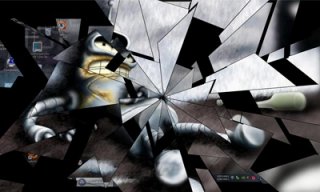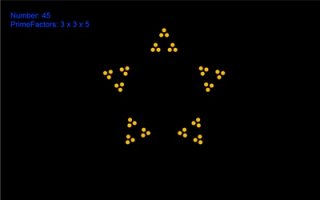Leaderboard
Popular Content
Showing content with the highest reputation on 10/01/2014 in all areas
-
GetModuleFunc.h 1. Introduction This writing describes in detail method for retrieving the address of exported function for loaded module without using any available API on either 32bit, 64bit or ARM based Windows systems. Structures definitions are taken from Microsoft SDK 7.1, unless otherwise specified. Loaded module is searched by name, not path. The code is written in form of function that has two parameters, WCHAR pointer to the module name and CHAR pointer to the function name, written in C++ and compiled using Microsoft Visual Studio Express 2013 for Windows Desktop. Basic knowledge of C++ is assumed. Attached GetModuleFunc.h has the full code for the function. 2. NT_TIB Structure defined inside winnt.h. It's the staring point for the algorithm. It includes self-referencing field - Self pointer, offset of which is used on non-ARM systems to read Thread Environment Block data. typedef struct _NT_TIB { struct _EXCEPTION_REGISTRATION_RECORD *ExceptionList; PVOID StackBase; PVOID StackLimit; PVOID SubSystemTib; #if defined(_MSC_EXTENSIONS) union { PVOID FiberData; DWORD Version; }; #else PVOID FiberData; #endif PVOID ArbitraryUserPointer; struct _NT_TIB *Self; } NT_TIB; typedef NT_TIB *PNT_TIB; 2.1. TEBThread Environment Block is chunk of memory filled with various information about the thread. TEB is defined inside winternl.h as: typedef struct _TEB { PVOID Reserved1[12]; PPEB ProcessEnvironmentBlock; PVOID Reserved2[399]; BYTE Reserved3[1952]; PVOID TlsSlots[64]; BYTE Reserved4[8]; PVOID Reserved5[26]; PVOID ReservedForOle; // Windows 2000 only PVOID Reserved6[4]; PVOID TlsExpansionSlots; } TEB, *PTEB; After the executable is loaded by the Windows PE loader and before the thread starts running, TEB is saved to fs(x86) or gs(x64 flavor) processor register. ARM systems use different technique which utilize coprocessors scheme (it's unclear whether the coprocessor is real hardware component or emulated). Self field of NT_TIB is the TEB pointer for the current thread.Even not officially documented, this behavior is observed on/for all available Windows operating systems with NT kernel. Acquiring pointer to the TEB is done using Microsoft specific compiler intrinsics: #include <winnt.h> #include <winternl.h> #if defined(_M_X64) // x64 auto pTeb = reinterpret_cast<PTEB>(__readgsqword(reinterpret_cast<DWORD>(&static_cast<NT_TIB*>(nullptr)->Self))); #elif defined(_M_ARM) // ARM auto pTeb = reinterpret_cast<PTEB>(_MoveFromCoprocessor(15, 0, 13, 0, 2)); // CP15_TPIDRURW #else // x86 auto pTeb = reinterpret_cast<PTEB>(__readfsdword(reinterpret_cast<DWORD>(&static_cast<NT_TIB*>(nullptr)->Self))); #endif Among others, one of the fields inside the TEB is pointer to the PEB (Process Environment Block). 3. PEB Process Environment Block is memory area filled with information about a process. PEB is defined inside winternl.h as: typedef struct _PEB { BYTE Reserved1[2]; BYTE BeingDebugged; BYTE Reserved2[1]; PVOID Reserved3[2]; PPEB_LDR_DATA Ldr; PRTL_USER_PROCESS_PARAMETERS ProcessParameters; PVOID Reserved4[3]; PVOID AtlThunkSListPtr; PVOID Reserved5; ULONG Reserved6; PVOID Reserved7; ULONG Reserved8; ULONG AtlThunkSListPtr32; PVOID Reserved9[45]; BYTE Reserved10[96]; PPS_POST_PROCESS_INIT_ROUTINE PostProcessInitRoutine; BYTE Reserved11[128]; PVOID Reserved12[1]; ULONG SessionId; } PEB, *PPEB; Pointer to the PEB is read from the TEB: auto pPeb = pTeb->ProcessEnvironmentBlock; 3.1. PEB_LDR_DATAContains information about the loaded modules for the process. Ldr field of the PEB points to PEB_LDR_DATA structure, defined inside winternl.h as: typedef struct _PEB_LDR_DATA { BYTE Reserved1[8]; PVOID Reserved2[3]; LIST_ENTRY InMemoryOrderModuleList; } PEB_LDR_DATA, *PPEB_LDR_DATA; Pointer to the PEB_LDR_DATA is read from the PEB: auto pLdrData = pPeb->Ldr; 3.2. LIST_ENTRYInMemoryOrderModuleList field of the PEB_LDR_DATA is doubly-linked list that contains the loaded modules for the process, defined inside winnt.h as: typedef struct _LIST_ENTRY { struct _LIST_ENTRY *Flink; struct _LIST_ENTRY *Blink; } LIST_ENTRY, *PLIST_ENTRY, *RESTRICTED_POINTER PRLIST_ENTRY; auto pModListHdr = &pLdrData->InMemoryOrderModuleList; 4. LDR_DATA_TABLE_ENTRYEach item in the list is a pointer to an LDR_DATA_TABLE_ENTRY structure, defined inside winternl.h as: typedef struct _LDR_DATA_TABLE_ENTRY { PVOID Reserved1[2]; LIST_ENTRY InMemoryOrderLinks; PVOID Reserved2[2]; PVOID DllBase; PVOID Reserved3[2]; UNICODE_STRING FullDllName; BYTE Reserved4[8]; PVOID Reserved5[3]; union { ULONG CheckSum; PVOID Reserved6; } DUMMYUNIONNAME; ULONG TimeDateStamp; } LDR_DATA_TABLE_ENTRY, *PLDR_DATA_TABLE_ENTRY; DllBase field is the base address of the loaded module.This stucture doesn't give wanted info for the module, being its name. One option is to read FullDllName which includes full path and extract module name from it. However, some independent authors give slightly different definition which include another field - BaseDllName. Modified LDR_DATA_TABLE_ENTRY struct can be defined, including BaseDllName field and freed from superfluous fields. InMemoryOrderLinks will be iterated, so that field is the top of the struct: typedef struct _LDR_DATA_TABLE_ENTRY { /*LIST_ENTRY InLoadOrderLinks;*/ LIST_ENTRY InMemoryOrderLinks; LIST_ENTRY InInitializationOrderList; PVOID DllBase; PVOID EntryPoint; PVOID Reserved3; UNICODE_STRING FullDllName; UNICODE_STRING BaseDllName; } LDR_DATA_TABLE_ENTRY, *PLDR_DATA_TABLE_ENTRY; 4.1. IterationGoing through the items in the list is straightforward. The last item points to the first, meaning the end is reached, hence it can be written: for (auto pModListCurrent = pModListHdr->Flink; pModListCurrent != pModListHdr; pModListCurrent = pModListCurrent->Flink) { // Get current module in list auto pModEntry = reinterpret_cast<PLDR_DATA_TABLE_ENTRY>(pModListCurrent); //... } 4.2. Reading Module NameThis data is stored in form of UNICODE_STRING. winternl.h definition is: typedef struct _UNICODE_STRING { USHORT Length; USHORT MaximumLength; PWSTR Buffer; } UNICODE_STRING; Module name lookup is case insensitive. Lengths specified inside UNICODE_STRING represent bytes, which means number of WCHAR characters is half of the numbers.One of the ways to make case insensitive comparison of the specified module name and listed one is to turn both to uppercase before comparing them: for (int i = 0; i < pModEntry->BaseDllName.Length / 2 /* length is in bytes */; ++i) { if (sModuleName[i] == '\0') // the end of the string break; else if ((sModuleName[i] & ~' ') != (pModEntry->BaseDllName.Buffer[i] & ~' ')) // case-insensitive break; else if (i == iLenModule - 1) // gone through all characters and they all matched { //... the rest of the code } } iLenModule is length of the wanted module name. It's get by counting number of characters inside the string until null-terminator is encountered: int iLenModule = 0; for (; sModuleName[iLenModule]; ++iLenModule); Comparison written in this manner allows for matching function argument L"kernel32" to listed L"kernel32.dll", which mimics to a decent degree (not completely for brevity) behavior of GetModuleHandle WinAPI function. In case of two different loaded modules whose names differs only in extensions, first listed is matched. 5. PE format walkthrough The Portable Executable (PE) format is a file format for executables, object code, DLLs, etc... It describes how and where inside the file the executable code is, import table, export table, resources, and every other data needed for loader. Exported functions are listed inside the Export Table. Reaching export table is done in few steps parsing the PE data. 5.1. IMAGE_DOS_HEADER The matching module's DllBase points to the first byte of the loaded image. PE starts with legacy DOS header defined inside winnt.h as: typedef struct _IMAGE_DOS_HEADER { // DOS .EXE header WORD e_magic; // Magic number WORD e_cblp; // Bytes on last page of file WORD e_cp; // Pages in file WORD e_crlc; // Relocations WORD e_cparhdr; // Size of header in paragraphs WORD e_minalloc; // Minimum extra paragraphs needed WORD e_maxalloc; // Maximum extra paragraphs needed WORD e_ss; // Initial (relative) SS value WORD e_sp; // Initial SP value WORD e_csum; // Checksum WORD e_ip; // Initial IP value WORD e_cs; // Initial (relative) CS value WORD e_lfarlc; // File address of relocation table WORD e_ovno; // Overlay number WORD e_res[4]; // Reserved words WORD e_oemid; // OEM identifier (for e_oeminfo) WORD e_oeminfo; // OEM information; e_oemid specific WORD e_res2[10]; // Reserved words LONG e_lfanew; // File address of new exe header } IMAGE_DOS_HEADER, *PIMAGE_DOS_HEADER; Therefore it can be written: auto pImageDOSHeader = reinterpret_cast<PIMAGE_DOS_HEADER>(pModEntry->DllBase); e_lfanew is offset to a NT header. 5.2. IMAGE_NT_HEADERS Another area of PE is NT header. This is effectively the starting point of the portable executable format description. Definition and the size of it depends on bitness. For 32bit it's: typedef struct _IMAGE_NT_HEADERS { DWORD Signature; IMAGE_FILE_HEADER FileHeader; IMAGE_OPTIONAL_HEADER32 OptionalHeader; } IMAGE_NT_HEADERS32, *PIMAGE_NT_HEADERS32; ...and 64bit version is: typedef struct _IMAGE_NT_HEADERS64 { DWORD Signature; IMAGE_FILE_HEADER FileHeader; IMAGE_OPTIONAL_HEADER64 OptionalHeader; } IMAGE_NT_HEADERS64, *PIMAGE_NT_HEADERS64; 5.3. IMAGE_NT_HEADERSOptionalHeader field is another structure discribing in detail PE file. It's directly followed by number of IMAGE_DATA_DIRECTORY structures. The exact number of these structures is saved inside IMAGE_NT_HEADERS as NumberOfRvaAndSizes field. For 32bit PE IMAGE_NT_HEADERS is defined as: typedef struct _IMAGE_OPTIONAL_HEADER { // // Standard fields. // WORD Magic; BYTE MajorLinkerVersion; BYTE MinorLinkerVersion; DWORD SizeOfCode; DWORD SizeOfInitializedData; DWORD SizeOfUninitializedData; DWORD AddressOfEntryPoint; DWORD BaseOfCode; DWORD BaseOfData; // // NT additional fields. // DWORD ImageBase; DWORD SectionAlignment; DWORD FileAlignment; WORD MajorOperatingSystemVersion; WORD MinorOperatingSystemVersion; WORD MajorImageVersion; WORD MinorImageVersion; WORD MajorSubsystemVersion; WORD MinorSubsystemVersion; DWORD Win32VersionValue; DWORD SizeOfImage; DWORD SizeOfHeaders; DWORD CheckSum; WORD Subsystem; WORD DllCharacteristics; DWORD SizeOfStackReserve; DWORD SizeOfStackCommit; DWORD SizeOfHeapReserve; DWORD SizeOfHeapCommit; DWORD LoaderFlags; DWORD NumberOfRvaAndSizes; IMAGE_DATA_DIRECTORY DataDirectory[IMAGE_NUMBEROF_DIRECTORY_ENTRIES]; } IMAGE_OPTIONAL_HEADER32, *PIMAGE_OPTIONAL_HEADER32; ...and for 64bit version it's: typedef struct _IMAGE_OPTIONAL_HEADER64 { WORD Magic; BYTE MajorLinkerVersion; BYTE MinorLinkerVersion; DWORD SizeOfCode; DWORD SizeOfInitializedData; DWORD SizeOfUninitializedData; DWORD AddressOfEntryPoint; DWORD BaseOfCode; ULONGLONG ImageBase; DWORD SectionAlignment; DWORD FileAlignment; WORD MajorOperatingSystemVersion; WORD MinorOperatingSystemVersion; WORD MajorImageVersion; WORD MinorImageVersion; WORD MajorSubsystemVersion; WORD MinorSubsystemVersion; DWORD Win32VersionValue; DWORD SizeOfImage; DWORD SizeOfHeaders; DWORD CheckSum; WORD Subsystem; WORD DllCharacteristics; ULONGLONG SizeOfStackReserve; ULONGLONG SizeOfStackCommit; ULONGLONG SizeOfHeapReserve; ULONGLONG SizeOfHeapCommit; DWORD LoaderFlags; DWORD NumberOfRvaAndSizes; IMAGE_DATA_DIRECTORY DataDirectory[IMAGE_NUMBEROF_DIRECTORY_ENTRIES]; } IMAGE_OPTIONAL_HEADER64, *PIMAGE_OPTIONAL_HEADER64; PE files generated by Microsoft tools allways create IMAGE_NUMBEROF_DIRECTORY_ENTRIES (16) IMAGE_DATA_DIRECTORY structures, 15 of which are documented in this order (winnt.h): #define IMAGE_DIRECTORY_ENTRY_EXPORT 0 // Export Directory #define IMAGE_DIRECTORY_ENTRY_IMPORT 1 // Import Directory #define IMAGE_DIRECTORY_ENTRY_RESOURCE 2 // Resource Directory #define IMAGE_DIRECTORY_ENTRY_EXCEPTION 3 // Exception Directory #define IMAGE_DIRECTORY_ENTRY_SECURITY 4 // Security Directory #define IMAGE_DIRECTORY_ENTRY_BASERELOC 5 // Base Relocation Table #define IMAGE_DIRECTORY_ENTRY_DEBUG 6 // Debug Directory // IMAGE_DIRECTORY_ENTRY_COPYRIGHT 7 // (X86 usage) #define IMAGE_DIRECTORY_ENTRY_ARCHITECTURE 7 // Architecture Specific Data #define IMAGE_DIRECTORY_ENTRY_GLOBALPTR 8 // RVA of GP #define IMAGE_DIRECTORY_ENTRY_TLS 9 // TLS Directory #define IMAGE_DIRECTORY_ENTRY_LOAD_CONFIG 10 // Load Configuration Directory #define IMAGE_DIRECTORY_ENTRY_BOUND_IMPORT 11 // Bound Import Directory in headers #define IMAGE_DIRECTORY_ENTRY_IAT 12 // Import Address Table #define IMAGE_DIRECTORY_ENTRY_DELAY_IMPORT 13 // Delay Load Import Descriptors #define IMAGE_DIRECTORY_ENTRY_COM_DESCRIPTOR 14 // COM Runtime descriptor 5.4. IMAGE_DATA_DIRECTORYDefinition is: typedef struct _IMAGE_DATA_DIRECTORY { DWORD VirtualAddress; DWORD Size; } IMAGE_DATA_DIRECTORY, *PIMAGE_DATA_DIRECTORY; It can now be written: auto pExport = reinterpret_cast<PIMAGE_DATA_DIRECTORY>(&pImageNtHeader->OptionalHeader.DataDirectory[IMAGE_DIRECTORY_ENTRY_EXPORT]); VirtualAddress field is RVA of the directory counting from the first byte (base) of the loaded module. If both VirtualAddress and Size fields are filled then the module exports functions. 5.5. IMAGE_EXPORT_DIRECTORY Definition is (winnt.h): typedef struct _IMAGE_EXPORT_DIRECTORY { DWORD Characteristics; DWORD TimeDateStamp; WORD MajorVersion; WORD MinorVersion; DWORD Name; DWORD Base; DWORD NumberOfFunctions; DWORD NumberOfNames; DWORD AddressOfFunctions; // RVA from base of image DWORD AddressOfNames; // RVA from base of image DWORD AddressOfNameOrdinals; // RVA from base of image } IMAGE_EXPORT_DIRECTORY, *PIMAGE_EXPORT_DIRECTORY; Base is ordinal value of the first exported function.NumberOfFunctions is overall number of exported functions from the module. NumberOfNames is number of functions exported only by name. AddressOfFunctions is RVA of the array of RVAs of exported functions addresses. AddressOfNames is RVA of the array of RVAs of exported functions names. AddressOfNameOrdinals is RVA of the array of WORD values each representing index of function exported by name, into the array of addresses. It's: auto pExports = reinterpret_cast<PIMAGE_EXPORT_DIRECTORY>(reinterpret_cast<ULONG_PTR>(pImageDOSHeader) + pExport->VirtualAddress); 6. Getting function RVAEvery exported function is accessible by odinal value. Functions exported by name are also accessible by name. Finding function by its ordinal value is fairly simple and fast. The lowest ordinal value is Base field of IMAGE_EXPORT_DIRECTORY struct. The highest ordinal value is get by adding the number of exported functions to that number, minus one of course. If the specified ordinal value is within this range, RVA is read from the array of functions addresses: if (iOrdinal) // function is wanted by its ordinal value { // Check to see if valid ordinal value is specified if (iOrdinal >= pExports->Base && iOrdinal < pExports->Base + pExports->NumberOfFunctions) dwExportRVA = pdwBufferAddress[iOrdinal - pExports->Base]; } In case of functions exported by name, name lookup needs to be performed.The code is: // Array of functions names auto pdwBufferNames = reinterpret_cast<LPDWORD>(reinterpret_cast<ULONG_PTR>(pImageDOSHeader) + pExports->AddressOfNames); // Array of functions indexes into array of addresses auto pwBufferNamesOrdinals = reinterpret_cast<LPWORD>(reinterpret_cast<ULONG_PTR>(pImageDOSHeader) + pExports->AddressOfNameOrdinals); And then the loop: // Loop through all functions exported by name for (DWORD j = 0; j < pExports->NumberOfNames; ++j) { // Read the listed function name auto sFunc = reinterpret_cast<LPCSTR>(reinterpret_cast<ULONG_PTR>(pImageDOSHeader) + pdwBufferNames[j]); //... } When the name of the function is matched (case sensitive) the RVA of the function will be read from pdwBufferAddress array at index read from pwBufferNamesOrdinals at loop counter value index: dwExportRVA = pdwBufferAddress[pwBufferNamesOrdinals[j]]; 6.1. Export ForwardingRVA of the function will resolve fonction's pointer. However there is one special case when the RVA offset points to a value inside the exports section and not to the function body which is normally found in some other sections of PE. When that happens, RVA will resolve to a null-terminated ASCII string value. This is called Export Forwarding. RVA is then replaced by the RVA value of the resolved function. if (dwExportRVA > pExport->VirtualAddress && dwExportRVA < pExport->VirtualAddress + pExport->Size) { // Read forwarded data. auto sForwarder = reinterpret_cast<LPCSTR>(reinterpret_cast<ULONG_PTR>(pImageDOSHeader) + dwExportRVA); //... } The format of the forwarding string is: ModuleName.FunctionName or ModuleName.#OrdinalValueTo resolve the RVA of the new exported function a recursive call to this function will be used. ModuleName has to be wide string. WCHAR buffer is allocated and all characters from ModuleName portion of forwarded string copied to it: WCHAR sForwarderDll[MAX_PATH]; // Reinterpret WCHAR buffer as CHAR one auto sForwarderDll_A = reinterpret_cast<CHAR*>(sForwarderDll); // Now go through all characters for (int iPos = 0; sForwarder[iPos]; ++iPos) { // Fill WCHAR buffer reading/copying from CHAR one sForwarderDll_A[2 * iPos] = sForwarder[iPos]; // copy character sForwarderDll_A[2 * iPos + 1] = '\0'; if (sForwarder[iPos] == '.') { sForwarderDll[iPos] = '\0'; // null-terminate the ModuleName string break; } } In case forwarding string specifies function name, pointer to that string is simply a pointer to a character following the dot.For OrdinalValue version the presence of hashtek character after the dot has to be checked and the hashtag string converted to integer value before recursive call made. The full code for this is: // Allocate big enough buffer for the new module name WCHAR sForwarderDll[MAX_PATH]; LPCSTR sForwarderFunc = nullptr; DWORD dwForwarderOrdinal = 0; // Reinterpret WCHAR buffer as CHAR one auto sForwarderDll_A = reinterpret_cast<CHAR*>(sForwarderDll); // Now go through all characters for (int iPos = 0; sForwarder[iPos]; ++iPos) { // Fill WCHAR buffer reading/copying from CHAR one sForwarderDll_A[2 * iPos] = sForwarder[iPos]; // copy character sForwarderDll_A[2 * iPos + 1] = '\0'; if (sForwarder[iPos] == '.') { sForwarderDll[iPos] = '\0'; // null-terminate the ModuleName string ++iPos; if (sForwarder[iPos] == '#') { ++iPos; // skip # character // OrdinalValue is hashtag, convert ASCII string to integer value for (; sForwarder[iPos]; ++iPos) { dwForwarderOrdinal *= 10; dwForwarderOrdinal += (sForwarder[iPos] - '0'); } if (dwForwarderOrdinal > MAX_ORDINAL) // something is wrong return nullptr; // Reinterpret the ordinal value as string sForwarderFunc = reinterpret_cast<LPSTR>(dwForwarderOrdinal); break; } else { sForwarderFunc = &sForwarder[iPos]; // FunctionName follows the dot break; } } } 6.2. FinalizingOnce funcion address RVA is get, it's added to the base address and returned from the function: return reinterpret_cast<LPVOID>(reinterpret_cast<ULONG_PTR>(pImageDOSHeader) + dwExportRVA); 7. ExampleThe attached zip contains two executables compiled from the source of 1K-Mandelbrot project, written by Emil Persson. The source had no explicit License Agreement. It's modified not to use WinAPI, rather to use method desribed here to call functions from used dlls and then compiled. Beautiful examples of visualisation of complex calculations, done in efficient way using OpenGL. Requirement is OpenGL 2.0. Third example is compiled for ARM. It's simple analog Direct2D clock, the original code of which is released under Artistic License/GPL by vckzdd. GetModuleFunc_Examples.zip 8. Conclusion This method isn't usually used by executables ran from user mode. It should be avoided used for production software, because it ommits taking ownership of critical section object used by windows during load/unload actions of the module, which could result in any kind of unhandled exception. Limited speed tests show that it's faster than standard GetModuleHandle/GetProcAddress method. Mimicking WinAPI behavior is achieved to a high level for valid input, with omitted special error handling and reporting. The only major difference is unsupported full-path processing. 8.1. Anti-Virus Software considerations This method enables compiling PE files with empty imports directory. In combination with accessing fs register at TEB/PEB offset it has been observed that 18.2% of AV scanners tend to flag 32bit executables, containing no code other than this function, as malware. 64 bit and ARM executables compiled from the same source never get flagged. References: Microsoft Corporation: Microsoft Portable Executable and Common Object File Format Specification, Revision 6.0 Matt Pietrek: Under The Hood - http://www.microsoft.com/msj/archive/s2ce.aspx An In-Depth Look into the Win32 Portable Executable File Format - http://msdn.microsoft.com/en-us/magazine/bb985992.aspx An In-Depth Look into the Win32 Portable Executable File Format, Part 2 - http://msdn.microsoft.com/en-us/magazine/cc301808.aspx Mark Russinovich, David A. Solomon, Alex Ionescu : Microsoft Windows Internals, 6th edition VirusTotal: Web Service - https://www.virustotal.com/ Emil Persson: 1K-Mandelbrot - http://www.humus.name/index.php?page=3D&ID=85 vckzdd: directxcode - https://code.google.com/p/directxcode/source/browse/#svn/Direct2D/Clock4 points
-
DirectSound UDF
LukeLe and 2 others reacted to eukalyptus for a topic
DirectSound UDF play audio files, record microphone, apply effects or create your own sound - check out the examples Download: https://autoit.de/index.php/Attachment/69-DirectSound-7z/ Or visit the original topic at the german forum - link in my signature3 points -
Direct2D UDF
Danyfirex and one other reacted to eukalyptus for a topic
Direct2D UDF Is Direct2D the new GDIPlus? Hmm - I think it is not! It is too complicated and Microsoft failed at the design But Direct2D is hardware accelerated and it has some features I always missed in GDIPlus, like loading/saving animated GIF´s, combining path´s or drawing bitmap´s in a perspective view... check out the examples to see, what can be done Download: https://autoit.de/index.php/Attachment/70-Direct2D-7z/ Or visit the original topic at the german forum - link in my signature2 points -
AutoIt Screensaver collection - GDIPlus / Direct2D
Danyfirex and one other reacted to eukalyptus for a topic
Some Screensavers I wrote (and more to come) using Direct2D. Download: AutoItScreenSavers.7z Run the scripts in TestMode by pressing F5 in SciTE Or compile them by pressing F7 and select the Screensaver in the Windows-Screensaver Settings The Direct2D-UDF in the download file is not the latest one - you find the newest version in my signature:2 points -

Windows Firewall UDF
Keithw reacted to JLogan3o13 for a topic
I dug this UDF out in response to a request in the General Help forum. There is still some tidying to do, but I thought I would post here for anyone that would benefit. All functions have been tested on both XP and Windows 7. Updated January 22, 2014: Tested on XP, WIN7 and WIN8.1, x86 and x64 Current version includes: Enable or Disable the Windows Firewall Add or Remove Authorized Applications to the Exclusions list Add or Delete Ports from the Exclusions list. Enable or Disable the use of Exceptions Enable or Disable Notifications of blocked applications Enable or Disable Existing Ports List all Applications in the Exclusions List List all Ports in the Exclusions List List Properties of the current Firewall Configuration Restore the Windows Firewall to its default configuration Windows Firewall.au31 point -
StringRegExpReplace($sIPAddress, "\.\d+$", "")1 point
-

GUI picture
Webcreation reacted to UEZ for a topic
Have a look here: '?do=embed' frameborder='0' data-embedContent>> Br, UEZ1 point -
1 point
-
Automating online banking is madness, why anyone would want to do it is mad, and the thought of it is mad. If I were banking online, I'd want to be in front on the computer all the time, because I'm not mad, if I walked away from it, I'd want it to log out, also because I'm not mad. I suppose if I wanted to automate someone else's banking and make a deposit into my account I'd probably automate it As you see, the window has no control information to click, thank god. M m m m madness.1 point
-
Nice article describing how one can use alternate methods to find DLL export addresses. I'm curious why you posted this here? You could have easily create a blog I've done this export lookup in Assembly threads before, as you probably know. One source of inspiration I used for doing that was this article, which uses assembly and hash lookups. (I don't use hashes myself) Also, for anyone interested in seeing whats in the TEB and PEB in more detail, try the GUI's out in the Processes and Threads UDF in my signature.1 point
-
I have absolutely no idea what you are talking (writing) about but the Mandelbrot demo is cool which seems to be based on the 1kb Mandelbrot version. I wondered why a fan has started on my notebook while the demo is running although the CPU usage is accordingly very low until I found out that the calculation is done by the GPU (ok, you said it in 8. Example already which I've overseen first). But a very nice documentation I need probably several weeks to understand what you are talking about here... Your skills are far beyond mine and that's terrifying but good to know. Br, UEZ1 point
-
You are defining 2 ObjEvent() definitions for the same object which I guess isn't possible and only the last is performed. Scroll down in the codebox. Jos1 point










